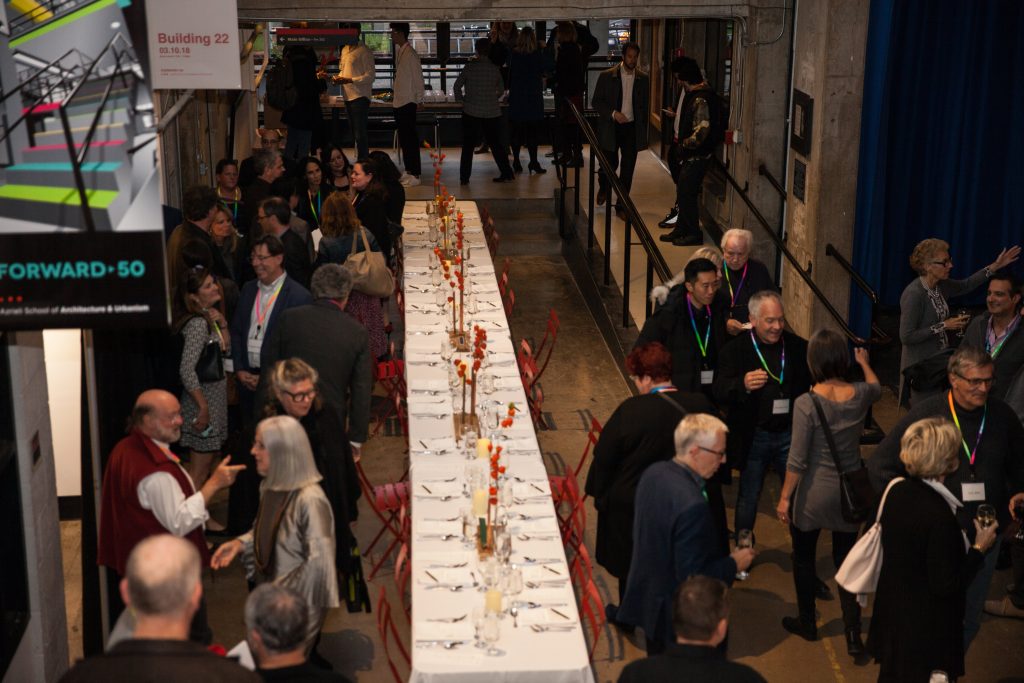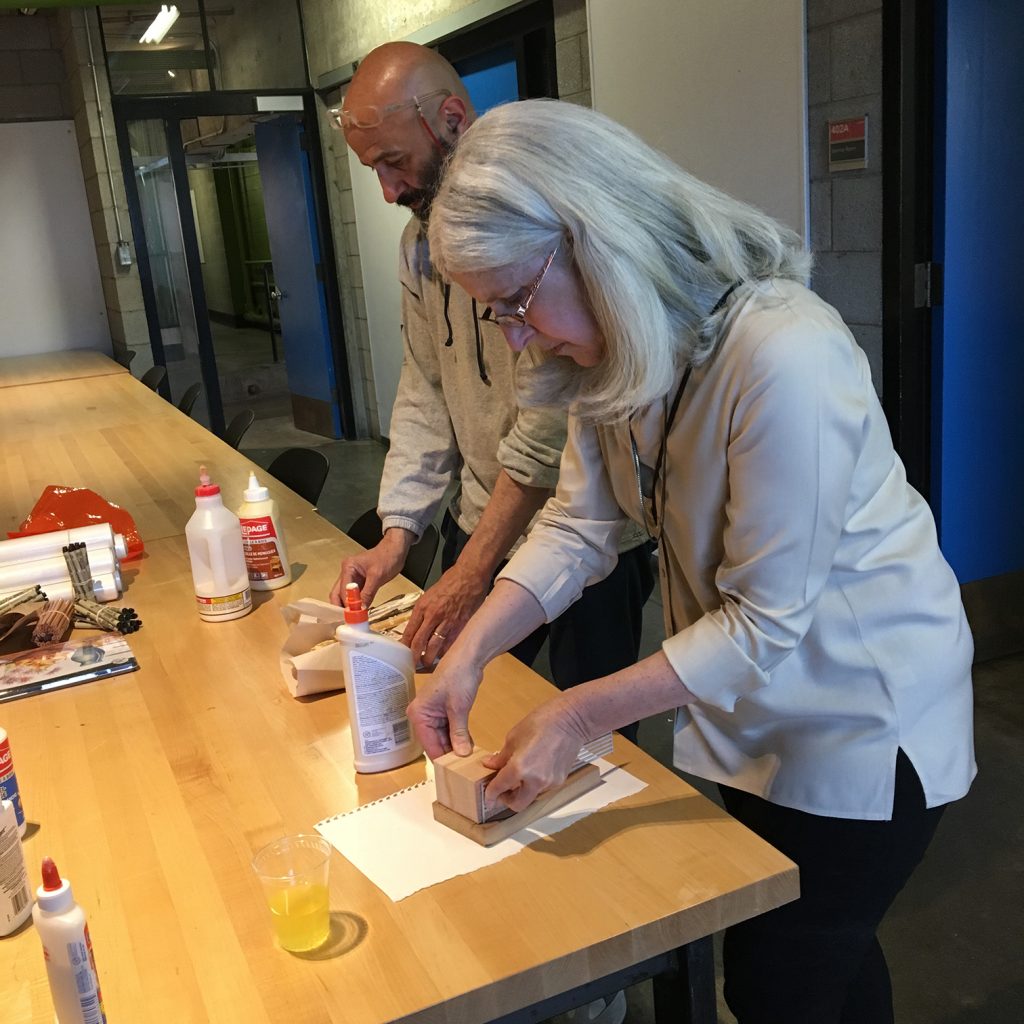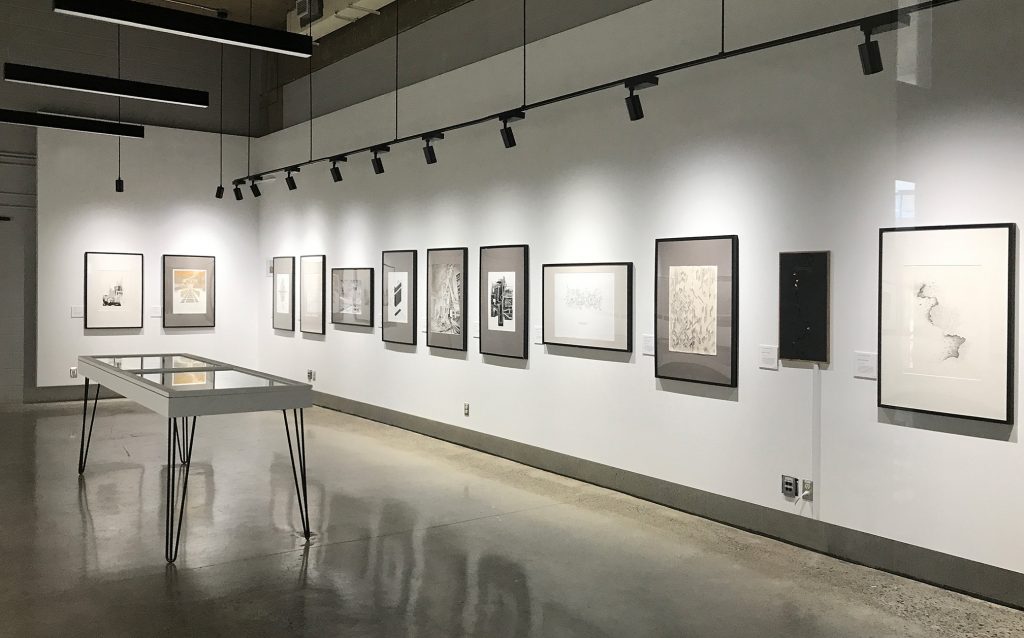Jill Stoner’s tenure as director of the Azrieli School: A look back
July 28, 2022
When Jill Stoner became Director of the Azrieli School of Architecture & Urbanism, her goal was “to project the school into the world and the world into the school.” Carleton University’s architecture program had a reputation for design excellence, which she felt should be better known. At the same time, ethical, ecological, and social issues were challenging architectural education.
“Architecture cannot afford the indulgence of thinking just about itself,” says Professor Stoner. “It has to be relevant to have meaning. It has to intersect with other concerns.”
Stoner, who served as Director from 2015 to 2021, retired in July 2022. Her title is now Professor Emerita. For the last two years of her directorship, she led the school through the COVID-19 pandemic and the pivot to online teaching.
Stoner believed it important to advance architecture as a way of thinking about the world and to ”cross-pollinate architecture with disciplines that are critical to the attention and needs of the world right now.”
This ambition for the school animated her approach. She extended the travel opportunities of the school’s Directed Studies Abroad (DSA) program to include countries like South Africa, Brazil, and Serbia, places whose urban realities are evolving and unfamiliar. Students did projects set in the Canadian North. Visiting professors came to Ottawa from as far away as South Africa to broaden students’ understanding of what’s at stake outside the studio.

Associate Professor Benjamin Gianni recalls working with Stoner on Forward 50, the reunion and celebration that marked the school’s 50th anniversary in 2018. There were lectures, presentations, exhibitions, an auction, and evening events. It culminated in a catered sit-down dinner for 300 students, faculty, and alumni, all of whom were organized into carefully curated groups at tables on the main level of the building.
Key to the event was connecting current students with former ones and strengthening ties with alumni. Stoner organized small group lunches to link alumni with students. Tables appeared throughout the building, and homemade meals were served, including food that the Director had grown and prepared herself.


“This was one of many examples of Jill’s extraordinary attention to detail and her knack for connecting big with small scale initiatives,” says Gianni. “Jill brought as much energy to modest but meaningful projects as to major undertakings like alumni relations, new academic programs, reduced workloads, balanced budgets, donor relations, and innovative outreach programs, to name a few.”
A significant initiative was expanding the three-year Master of Architecture program.
Associate Professor Paul Kariouk observes that the Master of Architecture program came to equal the best schools in North America under her directorship. Kariouk attributes this to Stoner’s focus on developing the three-year stream to bring in students with diverse backgrounds to supplement those already in architecture.
“Our MArch 1 cohort brings students who are mature, razor-focused upon our profession, and who quite simply, by coming from outside of architecture, can see design in myriad new ways,” says Kariouk. “They have the breadth to challenge the architectural and academic status quos.”
“It’s one of the things I am most proud of,” says Stoner. ”You get people from all those backgrounds in a studio, and the conversation and the work become much more integrated and meaningful than when you just have people who have been thinking about architecture for their whole adult lives.”

Her own undergraduate degree, obtained in 1975, is a Bachelor of Arts in Literature from New College of Florida, followed by a Master of Architecture from the University of Pennsylvania in 1980.
“To me, literature is a body of cultural production that speaks to all disciplines, and all disciplines would do well to embrace it for its unique lens and insights,” she says. “I think our understanding of the built world can become much deeper and more meaningful through literary engagement.”
Stoner joined Carleton in 2015 after 28 years at the University of California, Berkeley, where she was a professor of architecture. She also served in leadership roles such as Associate Dean, Graduate Division, co-chair of the Center for Jewish Studies, and chair of the faculty at the College of Environmental Design. Over the years, she participated in international design competitions, published in academic journals, and wrote two critically acclaimed books, Toward a Minor Architecture, MIT Press, 2012, and Poems for Architects, William Stout Publishers, 2001.
Of the challenges in moving from the United States to its northern neighbor, she says: “I knew almost nothing about the Truth and Reconciliation movement in Canada, and the deep well of possibilities in engaging with Indigenous history and culture. It was a steep learning curve for me but has informed not only my approach to leading the school, but my own set of values about the built environment.”
During her tenure at Carleton, she oversaw the hiring of 11 new faculty members, including two Indigenous scholars and an expert in design and spatial justice. New faculty was seen as a chance to bring in emerging research areas, approaches to pedagogy and for the school to better embody social values.
Stoner also sought partnerships and engagement with the Ottawa community. As a result, a continuing education program geared to local professionals was established. She started LAB, a local advisory board for the school, enlisting graduates and practicing professionals for advice. She also played an instrumental role in setting up the joint Certificate in Real Estate Development program with Carleton’s Sprott School of Business.
The two summer programs she initiated, STUDIO FIRST and Imagine Architecture, for people potentially interested in architecture, generate revenue for student enrichment, including travel bursaries, as well as improving the quality of potential applicants to the school. Stoner always sought more than one benefit.
Faced with an Architecture Building showing its half-century age, Stoner commissioned a study on renewal and coordinated upgrades such as new gender-neutral washrooms, the Lightroom Gallery, an exhibition gallery to replace the disused darkroom, and a student lounge. “Jill transformed leftover spaces in the building into exhibition, teaching, and lounge areas, making it a significantly more vibrant and convivial place to work,“ says Gianni. “Time and time again, she demonstrated a remarkable aptitude for turning spaces into places.“
Stoner spent the past sabbatical year catching up with family time in California and writing a series of essays for the journal Literary Hub, which she hopes to connect into a book. Also, with colleague Associate Professor Ozayr Saloojee, she co-edited a forthcoming issue of Architectural Design on the theme of Architectures of Refusal. She is now a professor at the Graduate School at UC Berkeley, where she has the opportunity to have continued involvement in research and graduate student supervision.

Of her time at Carleton, she says: “I really enjoyed getting to know both students and alumni and seeing that web of connections: where people come from, who they are when they are with the school, and who they become when they go out into the world.”
(Professor Federica Goffi is serving as Interim Director. The incoming director, Professor Anne Bordeleau, starts January 1, 2023.)